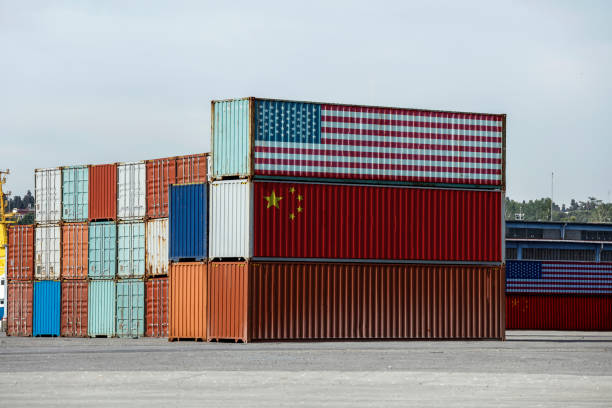China-USA Tariffs: Navigating the 2025 Trade Tensions

Introduction: The Resurgence of Trade Tensions
In early 2025, trade relations between China and the United States have once again become a focal point of global economic discourse. Following a period of relative stability, both nations have reintroduced and escalated tariffs, reigniting concerns over trade imbalances, economic sovereignty, and geopolitical strategies.
Key Developments in the China-USA 2025 Tariff Landscape

U.S. Tariff Actions:
- Comprehensive Import Tariffs: The U.S. has implemented a 10% tariff on all Chinese imports, marking a significant policy shift.
Removal of Exemptions: Tariff exemptions for goods valued under $800 have been eliminated, impacting major e-commerce platforms.
Legal Challenges: A recent court ruling has struck down many of these tariffs, though the decision is on hold pending appeal.
China's Countermeasures:
Targeted Retaliatory Tariffs: China has imposed tariffs on approximately $22 billion worth of U.S. goods, focusing on agricultural products like soybeans, pork, and cotton.
Strategic Export Controls: Export controls have been placed on critical materials such as tungsten and tellurium, signaling a strategic shift in trade relations.
Economic Implications
For the United States:
Inflationary Pressures: The reintroduction of tariffs is expected to lead to higher consumer prices, affecting everyday goods and services.
Supply Chain Disruptions: Industries reliant on Chinese imports, such as electronics and apparel, may face increased costs and logistical challenges.
Legal Uncertainty: Ongoing legal battles over tariff implementations contribute to an unpredictable business environment.
For China:
- Economic Decoupling: China is accelerating efforts to reduce dependence on U.S. markets, focusing on diversifying trade partners and enhancing domestic production capabilities.
- Growth Targets Amidst Tensions: Despite external pressures, China has set an ambitious 5% growth target for 2025, demonstrating resilience and strategic planning.
Global Repercussions
The escalating trade tensions between China and the U.S. have far-reaching implications:
Global Supply Chains: Industries worldwide are reevaluating their supply chains to mitigate risks associated with tariff-induced disruptions.
Market Volatility: Financial markets are experiencing fluctuations as investors react to the evolving trade landscape.
Diplomatic Strains: The tariff impositions have strained diplomatic relations, prompting discussions on international trade agreements and policies.
Looking Ahead: Potential Resolutions and Strategies
While the immediate future remains uncertain, several avenues could lead to de-escalation:
Negotiated Settlements: Diplomatic efforts may yield agreements to reduce or eliminate tariffs, fostering a more stable trade environment.
Diversification Strategies: Both nations are likely to continue diversifying their trade partnerships to mitigate risks associated with bilateral tensions.
Legal Resolutions: Pending legal decisions will play a crucial role in determining the trajectory of the current trade policies.






